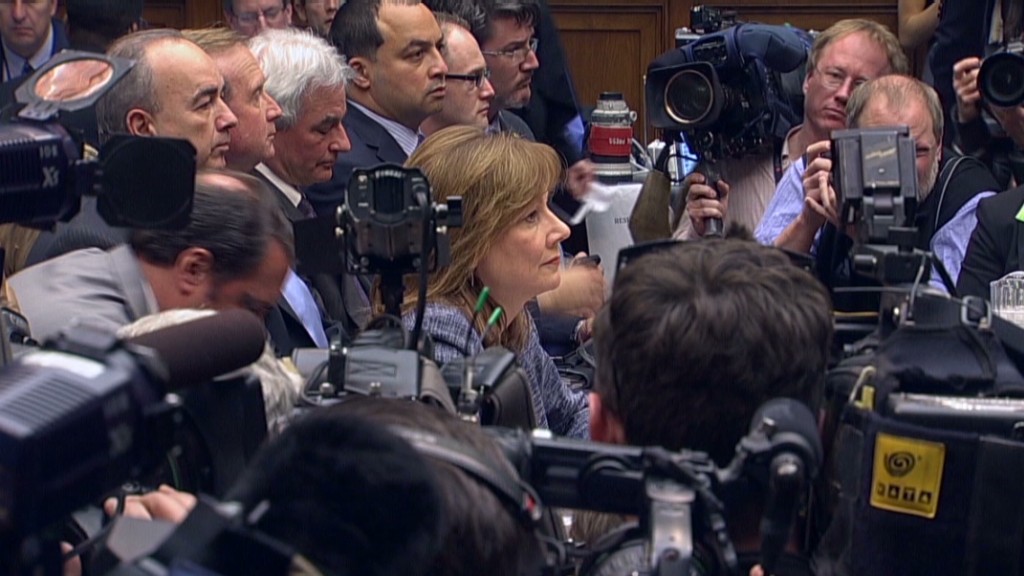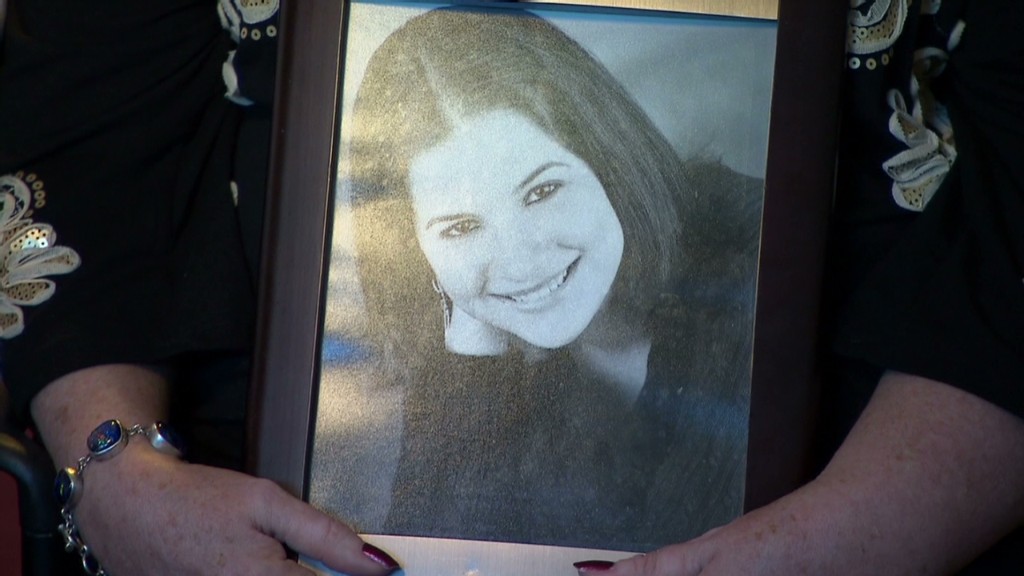
General Motors CEO Mary Barra and a federal safety regulator endured Day 1 of grilling on Capitol Hill.
One after another, members of a House committee lined up to ask why it took 10 years to issue a recall for a defect we now know killed at least 13 people.
Now for Day 2 on Wednesday, when a Senate panel gets its turn at Barra and National Highway Traffic Safety Administration administrator David Friedman.
One addition on Wednesday: the expected testimony of Calvin Scovel, the Department of Transportation inspector general.
The House proceeding on Tuesday covered lots of ground in the unfolding GM recall crisis.
Barra apologizes: "Today's GM will do the right thing," said Barra, who was named CEO in January. "That begins with my sincere apologies to everyone who has been affected by this recall, especially the families and friends (of those) who lost their lives or were injured. I am deeply sorry."

Regulator would have acted differently: Employees at NHTSA raised red flags two different times about airbag problems in GM vehicles, but it never moved forward with a full investigation.
Friedman told lawmakers the agency didn't have all the facts. "GM had critical information that would have helped identify this defect," he said. "Had this information been available, it's likely NHTSA would have changed its approach to the issue."
Why GM did not recall earlier: House member Diana DeGette said that GM elected not to replace a part that would have cost 57 cents a car because of cost and the lack of "an acceptable business case" for doing so.
Barra said statements in 2005 GM documents showing that the company decided it was too expensive to implement a fix were "very disturbing."
"If that's the reason the decision was made, that is not acceptable," Barra said. "That is not the way we do business today."
Who at GM knew what and when: Barra conceded the company had been operating under a "cost culture" in the days before the 2009 bankruptcy, but said today it is operating under a "customer culture."
She was asked about when GM knew of problems and why decisions were made and she repeatedly said she did not know the answer. "That's why we are doing a full and complete investigation," she said.
Barra said it was her understanding that at times different parts of the company did not share information.
To fix that, she said GM has hired Jeff Boyers to fill a newly created position, the vice president of global vehicle safety. All safety information will be reported to him, Barra said.
Related: GM sales unscathed by recall crisis
Why a substandard part was used: Barra got many questions about the faulty ignition switch that GM installed in cars despite knowing it did not meet its own company specifications. She explained that just because the part did not meet specifications does not mean it was "defective."
She was asked how many parts are currently used in GM cars that don't meet company specifications. Barra said she did not have the exact number. She did say that if parts do not meet "performance, reliability and safety" standards, they would be recalled.
Who signed off on the faulty ignition switch: Barra danced around questions about the engineers who approved the faulty switches, despite the fact that they didn't meet the company's specifications.
GM even redesigned the faulty ignition switches in 2006, but those still did not meet the company's own requirements.
What is GM's possible legal liability: Barra said GM has both legal and moral obligations to the families of victims, but did not specify what those will be.
When GM went through bankruptcy in 2009, it became shielded from having to pay accident victims for any crash that happened before the bankruptcy.
She said GM has hired attorney Kenneth Feinberg, known for handling high-profile victim compensation cases such as 9/11 and the BP oil spill, as a consultant.

